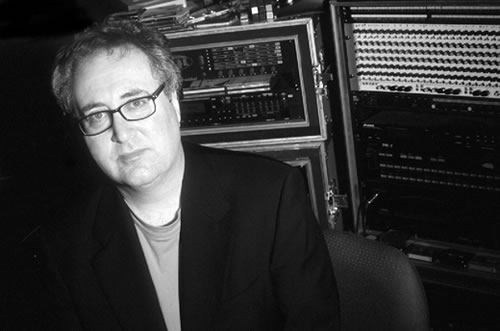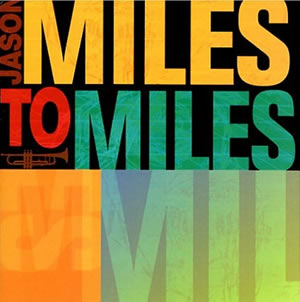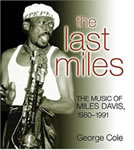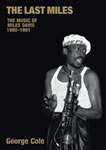Part two in an occasional series that looks at some of the people associated with Miles in the 1980s and who haven’t had the recognition they deserve.
Think of the classic album Tutu and you’ll probably think of the captivating sound of Miles’s horn or the superb playing and arrangements by Marcus Miller. But there was a third major element behind the sound of that album – Jason Miles. Jason Miles not only did the programming for the bulk of Tutu (keyboardist/programmer Adam Holzman also worked on several tracks), but he also worked on the follow-up albums, Siesta and Amandla. He became a friend of Miles’s, visiting him at home and helping him get to grips with electronic instruments, as well as co-writing some tunes with Miles.

Jason Miles © and courtesy Jason Miles
Jason Miles is a composer, arranger, producer, keyboardist and synthesiser programmer, who has worked with many artists including Chaka Khan, Sting, Michael Jackson and the late Luther Vandross. He’s also released a string of solo albums, the latest, Miles to Miles, evoking the spirit of Miles Davis. In addition, he has produced a series of tribute albums covering artists such as Weather Report, Grover Washington, Ivan Lins and Marvin Gaye, all of which have been very well received (for more on this, check out Jason’s website). But it’s his association with Miles that stands out for many, not least because he and Marcus Miller took Miles’s sound to a new plane. The result was a lush electronic soundscape over which Miles’s haunting sound hovered like a bird. This was an album with a rich palette of aural textures, tones and colours, samples (like the famous Duke Ellington cry of “One Mo’ Time” on “Don’t Lose Your Mind”) and it even spawned a funky 12″ remix of “Full Nelson,” with even more samples and effects.
Jason Miles first met Marcus Miller in 1979, when he booked the young bassist for a recording session. Miller was only twenty at the time, but already had a formidable reputation on the New York session scene. Around this time, MIDI and synthesiser technology was making their presence felt in the musical world and when Miller wanted to use some of this on a musical project, he called Jason Miles. The two men formed a close working relationship as a result. When Miles Davis moved from Columbia records to Warner Bros in 1985, he began looking for musical collaborators for his first album for the new label. Miller was one of those who got the opportunity to submit material for consideration by Miles and his producer, Tommy LiPuma. When Miller discovered that Miles was looking to move into the direction of electronic instruments and drum machines, he asked Jason Miles to work with him on some demos. “I called Jason and said ‘listen man, I need you to bring your emulator to my house’,” says Miller.
Jason Miles turned up at Miller’s home with a bank of electronic equipment and the two men starting collaborating. “We’d start using different sounds,” recalls Jason Miles, “He had sketches for the tunes and when he was putting it down, I would come up with some interesting sounds and then he’d adjust the music to the sound he wanted to use.” The result were three new song demos: “Tutu,” “Splatch,” and “Portia.” “We took the demos to a place where they were right in your face,” remembers Jason Miles. Miller flew from New York to Los Angeles to meet Tommy Lipuma and play him the demos. LiPuma was so taken by what Miller and Jason Miles had done that he instructed Miller to start recording them immediately and what’s more, to basically use the demos as the foundations for the new recordings. Jason Miles wasn’t surprised by LiPuma’s reaction: “It didn’t surprise me because I knew the melodies were just amazing and I knew Marcus was on to something,” he says.

Miller had wanted Jason Miles to join him in LA and work on the tracks, but Warner Bros weren’t prepared to pay for this, so Miller worked Adam Holzman on some additional programming. Even so, Jason Miles and Miller were still in touch by phone and the programmer would offer advice and guidance down the line. That said, Jason Miles has always graciously acknowledged the contribution that programmer Adam Holzman made on the three tunes.
Miles and LiPuma were so taken by the three Marcus Miller tunes that much to the bassist’s surprise, he was asked to compose and record more tunes back in New York. It was on these sessions that the rest of Tutu was recorded – “Tomaas,” “Perfect Way,” “Don’t Lose Your Mind,” and “Full Nelson,” and Jason Miles was present on all these sessions. Jason Miles recalls the first time he met Miles. Having being warned by Miller that he might be in the studio four minutes or four weeks depending on how Miles reacted to him, Jason Miles introduced himself to Miles. Miles’s reaction was: “Good name.” Later on, Miles gave Jason Miles a sketch (always a sure sign that Miles liked you) and signed it “Miles to Miles,” quipping that it sounded like a law firm.

Jason Miles © and courtesy Jason Miles
The release of Tutu, with its cool, contemporary sound, had an amazing effect on Miles’s profile, and is seen by many as his final classic album. It was no surprise that following the success of Tutu, Miller and Jason Miles would work on a follow-up album. The result was the soundtrack album Siesta, which was recorded in New York and North Hollywood under intense pressure – the soundtrack was recorded in a couple of weeks. Jason Miles understates his role in this process: “The pressure was on Marcus; I spent a lot of time playing video games.” But the resulting album contradicts this modest claim because much of the album’s sound is electronic, with Jason Miles creating orchestral sounds (such as cellos and violins), sound effects (including howling winds, rain and ghost-like vocals) as well as other samples (such as guitars). Engineer Steven Strassman, who worked on most of Siesta, recalls watching Jason Miles in action: “As far as synthesiser prowess [went] he was the best I had seen. Marcus would say ‘get me this sound and that sound,’ and Jason would have it up in a second.”
The final album project that saw Miller and Jason Miles working with Miles was Amandla. By now, synthesiser technology had moved on and machines like the Roland D-50 enabled gave Jason Miles even more scope to shape the sound. “I was able to create some really unique sounds and Miles loved it,” he told writer Stuart Nicholson. Tracks such as “Hannibal,” “Catembe,” “Amandla” and “Mr Pastorius” certainly bear this out. Although the collaboration between Miles and Miller ended after Amandla, Jason Miles kept in touch with the trumpeter. Miles would get Jason Miles interested in new kinds of clothes and the two men worked together on music both at Miles’s home and when Miles was in hospital. They even composed some music together including “Heavy Metal,” a track that was played live and which appears on the Montreux boxed set and the DVD Live in Munich.
The 1980s proved (yet again) to be a controversial period for Miles and the release of Tutu split the jazz community. But then that’s exactly what Miles wanted – people talking about his music and taking sides. Jason Miles has little time for those who believe that making albums like Tutu meant that Miles swapped artistic integrity for commerciality. “The people who said that are only living in the past, and wanted Miles to go back” he says, “but that was something Miles would never do.”
Many thanks to Jason for the kind permission to use his photographs. Check out Jason’s website at www.jasonmilesmusic.com

